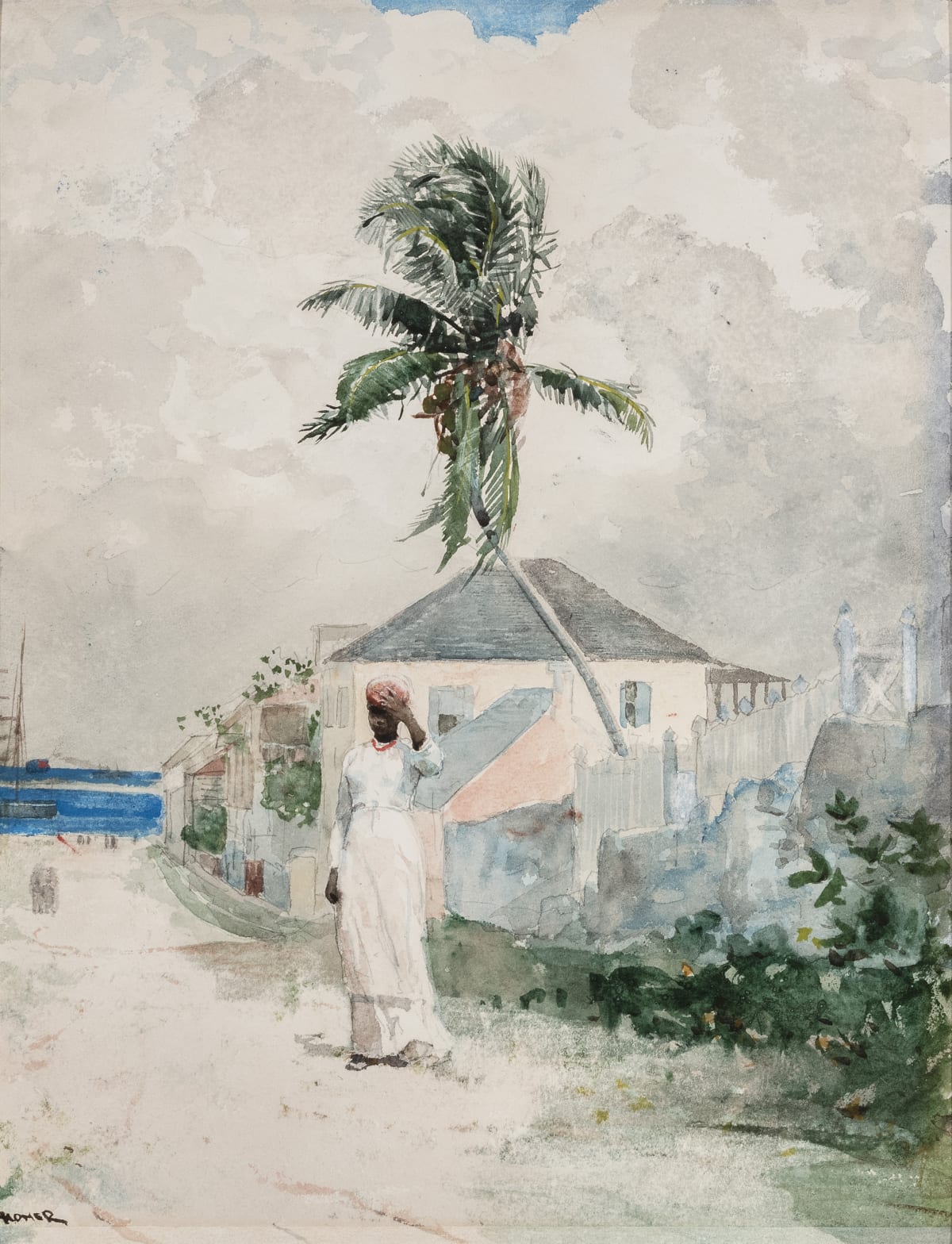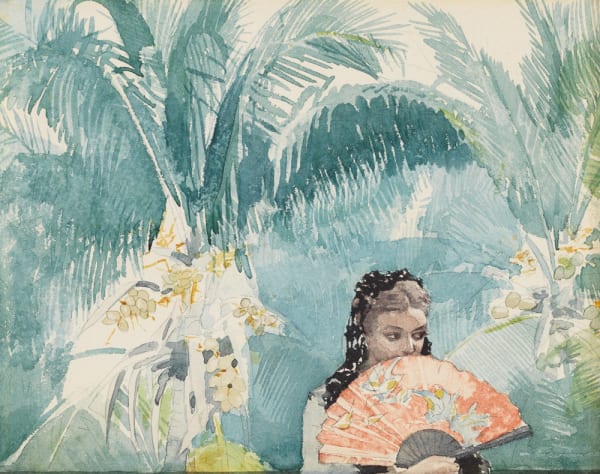Winslow Homer American, 1836-1910
The year 1875 was a good one for the still-young Winslow Homer. Following the tumult of the war and Reconstruction, Homer was scrambling to find his voice, both in terms of subject matter and in medium.
His interest in African–American subjects grew in the face of nettled critics who pressured him to find an authentically American subject. At the same time, his attempts at rendering handsome women in natural settings—in a few years a favorite trope of the American Impressionists—were roundly pilloried by the press, who complained of ill-proportioned figures.
Added to this is the complaint that Homer’s work had an “unfinished” quality, often associated with “Impressionism.”
Homer would not now, nor ever, put a polish to his works that his early critics seemed to require, but it is evident that he took many of these complaints to heart. He, too, sought a balance in subject and execution that would solidify his work as authentically American and timelessly artful.
In this crucible of post-bellum politics, imported Impressionism, and a view of what an appropriately American picture might be, Homer found a way forward in part by riding the wave of watercolor as it crested in 1875. Homer found the pictorial manner by which he could embrace the picturesque American views that would come into clarity in the next decade.





